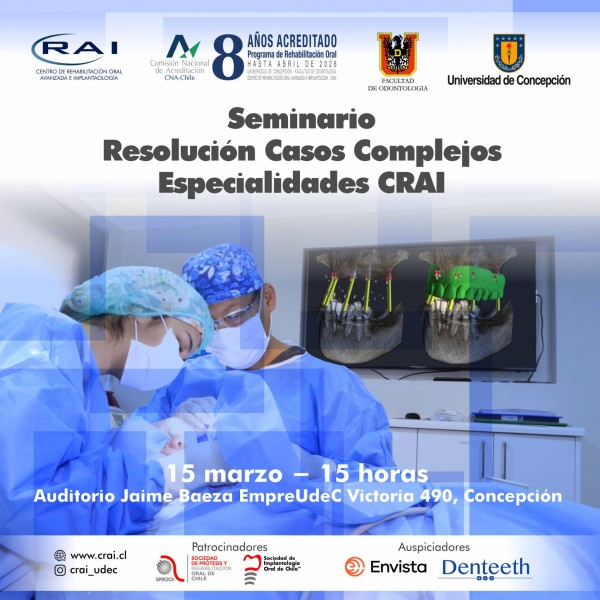Effect of splinting mini-implants on the marginal bone loss: a biomechanical model versus clinical randomized study in mandibular overdenture.
The International Journal of Oral & Maxillofacial Implants. 2010 Nov-Dec;25(6):1137-44. (ISI)
J Jofré., P.Cendoya, P. Muñoz .
Abstract
PURPOSE:
This aim of this study was to evaluate the effect of splinting mini-implants on marginal bone loss when used to retain mandibular overdentures.
MATERIALS AND METHODS:
With mathematical models, a finite element analysis was performed to compare the bone stress distribution around two mini-implants, either splinted with a bar superstructure or not splinted. In the clinical portion of this study, 90 mini-implants were placed in the anterior mandibles of 45 completely edentulous patients selected from a public health center. Patients were randomly allocated into two groups. Group-ball (22 patients, n = 44) received two single ball-type mini-implants, and group-bar (23 patients, n = 46) received two mini-implants splinted with a prefabricated bar. All implants were placed using a flapless technique and loaded immediately. Marginal bone loss was assessed through standardized retroalveolar radiographs of each mini-implant and compared 5, 10, 15, and 24 months after implant placement.
RESULTS:
The finite element analysis showed the highest minimum principal stress (-118 MPa) in bone surrounding the unsplinted mini-implant, while around the splinted implants the principal stresses were -56.8 MPa. After 2 years of follow-up in the clinical study, group-ball showed a trend toward greater marginal bone loss than group-bar (1.43 ± 1.26 mm and 0.92 ± 0.75 mm, respectively). Group-ball showed a significantly higher prevalence of vertical bone loss than group-bar (chi-square test, two-tailed).
CONCLUSION:
Splinted mini-implants with a rigid superstructure decrease the bone stress level in comparison with single mini-implants. The effects of bone stress magnitude may explain the clinical outcome, in which splinted mini-implants supporting a mandibular overdenture showed less marginal bone loss compared with nonsplinted mini-implants. Vertical bone resorption morphology was significantly more prevalent in the latter group.




